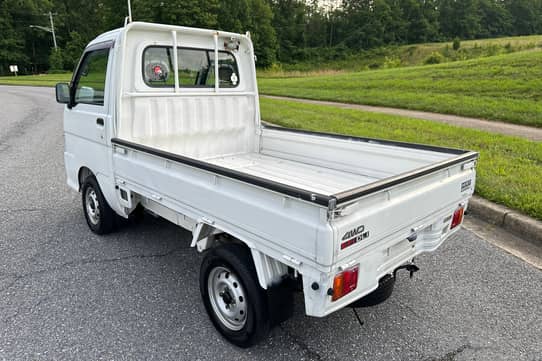In the domain of miniature vehicles, hardly any can equal the unique attraction and functionality of Japanese kei trucks. These small, versatile workhorses have become a preferred choice for numerous among Japan, thanks to their efficiency and remarkable functionality. Born from a designated automotive category, kei trucks are designed to maximize function while reducing size, making them ideal for metropolitan environments and countryside landscapes in equal measure.
Kei trucks provide a host of advantages that make them stand out in the automotive market. With their agile dimensions, they easily traverse tight streets and congested areas, while their durable engineering yields remarkable strength and load capacity. Regardless of whether used for transporting goods, agriculture, or even leisure activities, kei trucks stand as trustworthy companions for a variety of tasks. Their affordability, fuel efficiency, and minimal upkeep expenses further boost their desirability, making them an wise choice for companies and people.
History of Kei Trucks
Kei trucks originated in Japan in the post-World War II era as a response to the need for cost-effective and efficient vehicles. The term "軽" translates to "light" in English, reflecting the purpose of these compact vehicles. The Japanese government introduced regulations in 1949 that defined the dimensions and engine capacity for kei cars and trucks, allowing them to benefit from lower taxes and coverage costs. This initiative aimed to promote economic recovery and provide transportation options for the population.
As the domestic market developed, kei trucks quickly became popular among entrepreneurs and farmers who required reliable transportation for goods and services. Their light construction, small size, and economical engines made them ideal for navigating Japan's narrow streets and bustling urban environments. The versatility of kei trucks helped them carve out a unique niche in the automotive landscape, becoming a cornerstone in various industries, from agriculture to construction.
Over the years, kei trucks evolved with advancements in technology and aesthetic. Manufacturers like Suzuki Motor Corporation, Daihatsu, and Mitsubishi began producing a variety of models with improved performance and features. The kei truck segment became known for its practicality, allowing consumers to enjoy both functionality and value. Today, kei trucks remain an iconic symbol of Japanese automotive culture, continuing to serve their purpose in both urban and countryside settings while adapting to modern demands.
Features and Specifications
Kei trucks are crafted with a emphasis on optimization and slimness, making them adaptable for various applications. Generally measuring up to 3.4 meters in size and 1.48 meters in span, these motors provide an optimal balance of volume and functionality. They are driven by compact motors, usually limited to 660cc, which allows for great fuel consumption while still delivering adequate power for city and outdoor driving.
The inside of kei vehicles are frequently surprisingly spacious, considering their limited dimensions. Many models offer practical seating arrangements and adjustable configurations to fit different types of cargo. Additional features such as air conditioning, automated steering, and modern audio systems can also be seen in newer models, enhancing the driving experience while maintaining pleasantness for passengers.
Safety and handling are prioritized in the construction of kei trucks, with many models fitted with advanced stopping mechanisms and upgraded suspension setups. In spite of their compact size, kei trucks exhibit notable load capacities, often ranging from 350 to 750 kilograms, making them suitable for small business applications. This combination of dimensions, efficiency, and usability positions kei trucks as a preferred choice for companies and people alike.

Pros and Disadvantages of Kei Trucks
Kei trucks present various pros, particularly in urban environments where space is limited. Their compact size allows them extremely maneuverable, allowing drivers to navigate through crowded streets and tight parking conditions with comfort. Additionally, their slim design contributes to enhanced fuel efficiency, causing them a cost-effective selection for people and businesses alike. Owners can reduce on fuel costs while enjoying the features of a vehicle that can perform various duties.
Nonetheless, kei trucks do have some shortcomings that potential buyers should take into account. The smaller size results in reduced cargo capacity compared to more substantial trucks, which can be a drawback for those needing to carry larger loads. Furthermore, while they are designed for efficiency, their engines may lack the capability required for fast driving, rendering them less suitable for long-distance travel or intensive applications.
Regardless of these limitations, kei truck s continue to be popular due to their budget-friendliness and usability. They are often easier to insure and maintain, appealing to those with monetary constraints. In conclusion, kei trucks strike a balance between usefulness and convenience, making them a superb option for many drivers in Japan and elsewhere.
